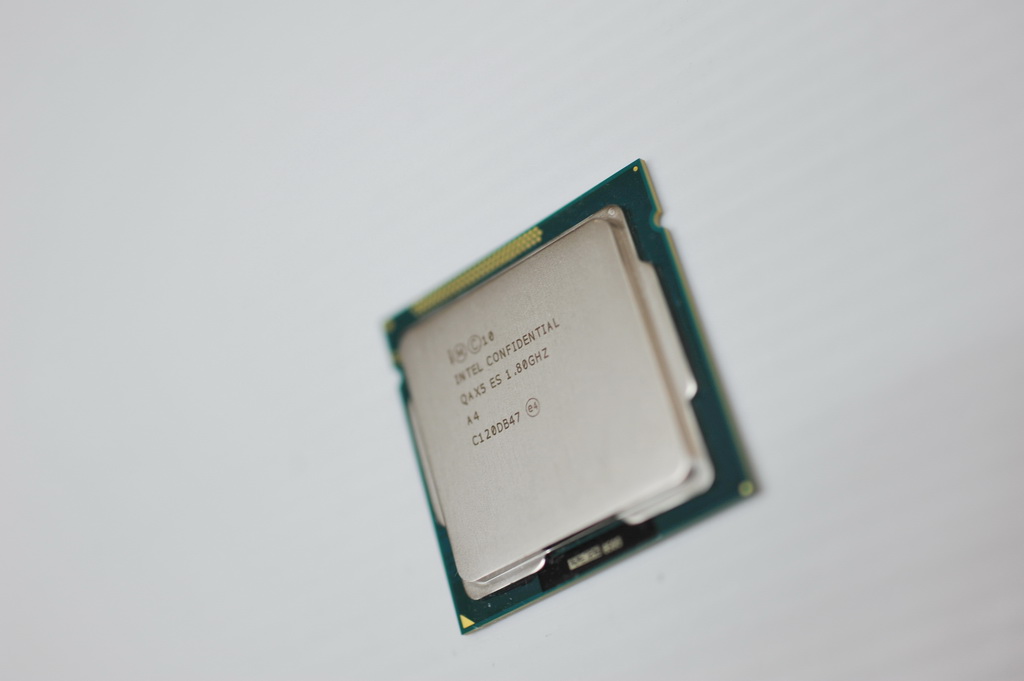Intel to Launch Four New Mobile Ivy Bridge Celerons in Q1 2013
Intel is preparing the release of four new mobile Celeron processors based on its Ivy Bridge architecture. According to CPU World, the CPUs will be launched in the first quarter of next year.
Targeted as replacements for the entry-level and ULV Celeron 800 and B800 series, Intel will introduce two ultra-low voltage processors, the 1.5 GHz 1007U and the 1.8 GHz 1037U, both of which arrive with a TDP of 17 watts and support for DDR3-1333 memory. The mainstream models, the 1.8 GHz 1000M and the 2.1 GHz 1020M are rated at 35 watts and are combined with DDR3-1600 memory.
The lower power consumption of the U processor is also made possible due to a clocked down graphics unit, which runs at 350 MHz/1000 MHz, versus 650 MHz/1000 MHz in the mainstream versions. All new Celeron processors are dual-core models without support for Hyper-Threading.
Prices are unknown at this time, but expect them to land in the same neighborhood as the current 800/B800 series, which spans from $80 to $134 for the dual-core models.
Contact Us for News Tips, Corrections and Feedback
Get Tom's Hardware's best news and in-depth reviews, straight to your inbox.

Wolfgang Gruener is an experienced professional in digital strategy and content, specializing in web strategy, content architecture, user experience, and applying AI in content operations within the insurtech industry. His previous roles include Director, Digital Strategy and Content Experience at American Eagle, Managing Editor at TG Daily, and contributing to publications like Tom's Guide and Tom's Hardware.
-
kawininjazx Celerons are great CPUs for basic workstations, I am actually impressed by the multi core ones, though I would spring for a Pentium if I was on a budget. At least you still get to run an intel chipset on a cheap CPU.Reply -
A Bad Day hydac7Celerons are great for landfillsReply
i5 37750s are an absolute overkill for low power usage, such as web browsing, word processing, movies, micro-servers, etc.
Actually, the i5s would be terrible for low power usage compare to the ultra-low volted chips. -
jacobdrj Tomfreakhow about a low power celeron ivy desktop to kill off E-350/atom?This would be awesome, so long as the GPU was capable.Reply
-
i have a pentium b970 in my laptop and i have been very impressed with it, i was very sceptical but pentium holds its weight well, i deemed it fit enough to pair an ssd with it. i am guessing an ivy bridge celeron is near equivalent to sandy bridge pentiumReply
-
dextermat For my part, celeron just doesn't cut it.Reply
It might be ok for a few years but creep down to a slow after a while compared to regular cpus.
They need more cache. -
silverblue I'm not sure about this naming convention. The 1.5GHz 1007U to 1.8GHz 1037U makes sense; after all, the third number shows the number of MHz higher than the base model. The 1.8GHz 1000M to 2.1GHz 1020M, however, follows another scheme. It doesn't start at the same point, fair enough, but the third number means something completely different. Having said that, AMD's conventions are hardly any better.Reply
